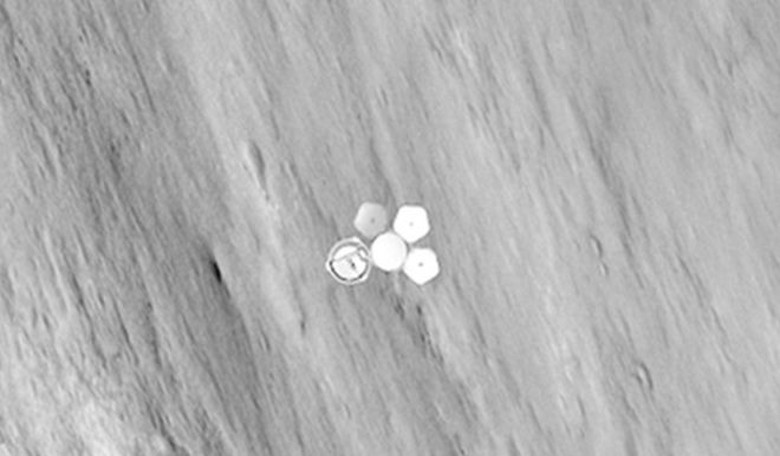
A new study has revealed that the British probe “Beagle-2” (Beagle 2) crashed while landing on Mars and could even collect information during the 13 years after that. Built in the UK “Beagle-2” was deployed on the surface of Mars on Christmas day 2003, with the assistance of the spacecraft of the European space Agency Mars Express.
The module was equipped with a parachute that was to slow the descent, and airbags that were supposed to protect it when you push on the ground. But since the signal of the successful landing was not followed, the engineers assumed that it crashed. However, two years ago, “Beagle-2” was seen on the surface of Mars.
And here, the method called “reflection analysis” showed that the lander has deployed at least three, maybe four solar panels, once on the surface of the red planet. Scientists from the British universities of De Montfort and Leicester combined a 3D program with the analysis of reflection, to associate the virtual and the real image of “Beagle-2” and set as sunlight is reflected from panels.
These findings were then compared with the original pictures made by the HiRISE camera onboard the Mars Reconnaissance Orbiter. According to lead researcher of digital design Nika Highet from De Montfort University, these methods allowed us to provide the most accurate explanation, which you could get without leaving the planet.
“We are pleased to say that not only went further than they meant to the original plan, concluding that “Beagle 2″ is not crashed, but landed, and even launched most of their batteries,” he says.
The analysis also suggests that the probe could even work for several months, not being able to send their data back to Earth. Professor mark Sims of Leicester University said that this “unique” concept has led to “interesting results”: the landing took place as planned, and three of the four solar panels successfully opened.
“He may have been working for hundreds of days, depending on how much dust has accumulated on the solar panels and swept her dust devils, as it did with the Mars Exploration Rovers,” he says. “Maybe it works today, but it is extremely unlikely”.
Mission “Beagle-2” was directed by the late Professor Colin Pillinger. His spacecraft, named after the cartoon character “Snoopy” was able to collect soil samples and analyze them for the presence of organic molecules associated with life, in a tiny onboard laboratory.
In 2014 MRO NASA found “Beagle-2” on the surface of Mars. The spacecraft photographed the landing site of the device and noticed that he landed as planned and several of its solar panels opened. Professor Sims, who worked with the “Beagle-2”, says she’s got genuine satisfaction from the fact that the system worked as expected (at least as snapshots).
“We were so close. Did right for so many things. Very sorry that the link did not work and we have not received the scientific response. Obviously, the command “Beagle-2″ has done an incredible job. It showed that the design was good. The module landed on Mars on the first attempt”.
“Crashed” Mars probe “Beagle 2” could collect information 13 years
Ilya Hel
